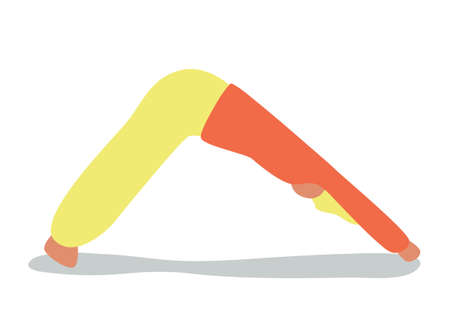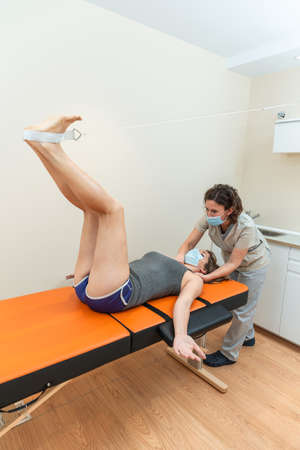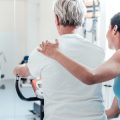1. Understanding Ankle and Knee Injuries
Ankle and knee injuries are among the most common musculoskeletal problems in the United States, affecting people of all ages and activity levels. Whether you’re an athlete, a weekend warrior, or simply going about your daily routine, these injuries can happen unexpectedly and have a significant impact on your mobility and quality of life.
Overview of Common Ankle and Knee Injuries
Both the ankle and knee joints are complex structures that support body weight and allow for movement in multiple directions. Because of this, they are vulnerable to a range of injuries. Here’s a look at some of the most frequent types:
| Joint | Common Injuries | Description |
|---|---|---|
| Ankle | Sprains Fractures Tendonitis |
Ligament tears or stretches (often from rolling the ankle) Broken bones due to trauma or falls Inflammation of tendons from overuse or repetitive motion |
| Knee | ACL/MCL Tears Meniscus Injuries Patellar Tendonitis Knee Bursitis |
Tears in key stabilizing ligaments (often sports-related) Tears in the cartilage that cushions the knee joint Pain and swelling at the front of the knee (jumper’s knee) Swelling and irritation in the knee’s fluid-filled sacs |
Mechanisms of Injury
The causes of ankle and knee injuries vary but often include:
- Sports Activities: Sudden stops, jumps, twists, or direct impacts during basketball, soccer, football, and running.
- Everyday Accidents: Slipping on ice, tripping on uneven surfaces, or missteps while walking or climbing stairs.
- Overuse: Repetitive motion from activities like jogging, cycling, or jobs requiring prolonged standing or kneeling.
- Aging: Wear-and-tear over time leading to weakened ligaments and cartilage.
Prevalence in the United States
Ankle sprains are estimated to affect over 2 million Americans each year. Knee injuries are just as widespread; for example, ACL tears alone account for more than 200,000 cases annually. These numbers highlight how important it is for Americans to understand prevention and effective rehabilitation strategies for these common injuries.
Quick Facts: Ankle & Knee Injuries in America
- Ankle sprains make up nearly 20% of all sports-related injuries.
- Knee problems are a leading cause of doctor visits among adults under age 50.
- You don’t have to be an athlete—everyday slips and falls are a major source of injuries.
The Takeaway
Ankle and knee injuries are not only common but can seriously disrupt everyday life. By understanding how these injuries happen and who is most at risk, we lay the groundwork for comprehensive rehabilitation strategies tailored to your needs.
2. Initial Assessment and Diagnosis
Best Practices for Orthopedic Evaluation
When someone experiences an ankle or knee injury, the first step in rehabilitation is a thorough evaluation. Orthopedic specialists follow best practices to understand the extent of the injury, which helps create an effective treatment plan. Here’s what this process usually looks like:
- Medical History: The doctor asks about how the injury happened, previous injuries, and any relevant medical conditions.
- Physical Examination: This includes looking at swelling, bruising, range of motion, and checking for tenderness or instability in the joint.
- Functional Testing: The specialist may ask you to walk, stand, or move your joint in certain ways to see how it responds.
Key Points Checked During Physical Exam
| Assessment Area | Knee Injury | Ankle Injury |
|---|---|---|
| Pain Location | Patella, ligaments, meniscus | Lateral/medial malleolus, Achilles tendon |
| Swelling | Knee joint effusion | Ankle joint or foot swelling |
| Stability Tests | Lachman test, McMurray test | Talar tilt test, anterior drawer test |
| Range of Motion | Bending and straightening knee | Dorsiflexion and plantarflexion of ankle |
Imaging Techniques Used in Diagnosis
If the initial assessment suggests a more severe injury, imaging techniques provide a clearer picture. In the U.S., doctors often use:
- X-rays: To check for bone fractures or dislocations.
- MRI (Magnetic Resonance Imaging): For detailed images of soft tissues like ligaments and cartilage.
- Ultrasound: Sometimes used for quick evaluations of tendons and muscles around the joint.
- CT Scan: Occasionally used for complex bone injuries.
Common Imaging Techniques Table
| Imaging Type | Main Use for Knee/Ankle Injuries |
|---|---|
| X-ray | Bones: fractures, dislocations |
| MRI | Ligaments, meniscus (knee), tendons (ankle) |
| Ultrasound | Tendons, muscle tears, fluid buildup |
| CT Scan | Complex or subtle bone injuries |
The Importance of Early and Accurate Diagnosis
An early and accurate diagnosis is essential for successful rehabilitation. If a sprain or tear goes unnoticed, it can lead to long-term issues like chronic pain or instability. By quickly identifying the specific injury using best practices and appropriate imaging, orthopedic specialists can start targeted treatments right away—helping patients get back on their feet faster and avoid complications down the road.

3. Acute Phase Management
Understanding the Acute Phase
The acute phase begins immediately after an ankle or knee injury and lasts for several days. The main goals during this time are to control pain, reduce swelling, and protect the injured area while allowing safe movement. In the United States, these steps are crucial for preventing complications and setting the stage for a successful recovery.
Strategies for Pain Control and Swelling Reduction
Effective management in the acute phase uses a combination of home care techniques, medical recommendations, and protective devices commonly used in American orthopedic care. One of the most widely recommended methods is the RICE protocol:
| RICE Component | Description | How It Helps |
|---|---|---|
| Rest | Avoid putting weight on the injured joint; use crutches if needed. | Prevents further damage and allows healing to begin. |
| Ice | Apply an ice pack (wrapped in a towel) for 15-20 minutes every 2-3 hours. | Reduces pain and limits swelling by constricting blood vessels. |
| Compression | Use an elastic bandage or compression sleeve around the joint. | Helps minimize swelling and provides mild support. |
| Elevation | Keep the injured ankle or knee above heart level as much as possible. | Aids in reducing swelling by promoting fluid drainage. |
Safe Mobilization Techniques
While rest is important, completely immobilizing the joint for too long can slow recovery. American orthopedic guidelines encourage safe, gentle movement within pain-free ranges early on. This may include:
- Ankle pumps or circles: Moving the ankle up and down or in circles to keep blood flowing without stressing the injury.
- Knee bends: Gently bending and straightening the knee if tolerated, helping maintain flexibility.
- Guided physical therapy: A physical therapist may teach specific exercises to start regaining motion safely.
The Role of Bracing and Support Devices
Depending on injury severity, healthcare providers in the U.S. often recommend braces, boots, or splints to stabilize the joint. These devices:
- Limit harmful movements while allowing safe activity.
- Reduce risk of re-injury during daily tasks.
- Can be adjusted as healing progresses, supporting a gradual return to normal function.
Pain Management Options Commonly Used in America
- Over-the-counter medications: Acetaminophen (Tylenol) or non-steroidal anti-inflammatory drugs (NSAIDs) like ibuprofen (Advil) are frequently used for short-term pain relief and inflammation control.
- Cryotherapy: Ice machines or cold packs are standard tools in clinics and at home for pain management after injury.
- Pain monitoring: Keeping track of pain levels helps guide activity choices and lets your care team know if additional treatment is needed.
Summary Table: Acute Phase Management Tools & Tips
| Tool/Technique | Main Benefit | Common Use in U.S. Care Settings |
|---|---|---|
| Icing/Cryotherapy | Pain relief & swelling control | Icepacks, gel wraps, cold therapy machines at home & clinics |
| Elastic Compression Wraps/Sleeves | Lowers swelling & provides support | Athletic tape, ACE bandages widely available in pharmacies/sports stores |
| Ankle/Knee Braces/Boots/Splints | Limb protection & mobility assistance | Custom-fitted braces from orthopedists or off-the-shelf products at medical supply stores |
| Pain Medications (OTC) | Eases discomfort for better rest & rehab participation | Taken as directed by provider; avoid overuse to prevent side effects |
If You’re Unsure What’s Safe, Ask Your Provider!
Your doctor or physical therapist can recommend which strategies are best for your specific injury and lifestyle. In the United States, personalized care plans help ensure a smooth transition from acute care to more advanced rehabilitation stages. Always follow their advice for activity level and device use to maximize healing while staying safe.
4. Rehabilitation Protocols and Functional Recovery
Evidence-Based Therapeutic Exercises for Ankle and Knee Injuries
Rehabilitation after an ankle or knee injury is crucial for regaining strength, stability, and function. Orthopedic specialists in the U.S. recommend evidence-based exercises that target key muscle groups while considering each patient’s daily activities—whether it’s hiking in Colorado, playing pickup basketball in New York, or walking your dog in a suburban neighborhood.
Recommended Exercise Progression
| Phase | Goals | Example Exercises | Frequency |
|---|---|---|---|
| Acute (0-1 week) | Reduce pain & swelling Protect joint |
Ankle pumps Quad sets Straight leg raises (knee) |
2-3 times/day |
| Subacute (1-4 weeks) | Restore range of motion Begin gentle strengthening |
Towel stretches Heel slides Mini-squats Resistance band exercises |
1-2 times/day |
| Advanced (4+ weeks) | Improve strength & balance Enhance functional movement |
Lunges Single-leg stands Bosu ball balance Lateral step-downs |
3-5 times/week |
| Return-to-Activity (6+ weeks) | Prepare for sports/work/recreation Avoid reinjury |
Plyometrics Ladder drills Cutting drills (for athletes) |
As tolerated under supervision |
Progression Guidelines Tailored to American Lifestyles
- Pain Monitoring: Only increase intensity if pain remains below a 3 out of 10.
- Swelling Check: Swelling should not persist after exercise; if it does, scale back activity.
- Cultural Fit: For those enjoying weekend hikes or city commutes, include stairs and uneven surface training early in the program.
- Athletes: Sport-specific drills like jumping, pivoting, or sprinting are added once foundational strength and stability return.
- Seniors: Focus on fall-prevention and safe ambulation with household activities integrated into routines.
Return-to-Activity Criteria
Your healthcare provider will use clear benchmarks to decide when you’re ready to get back to work, sports, or recreation. These may include:
- No swelling or instability during daily activities.
- Pain-free movement through full range of motion.
- Able to hop on affected limb without discomfort (for athletes).
- Balance within 90% of the uninjured side.
- No limp during brisk walking or light jogging.
- Adequate strength: at least 85% compared to the other side for key muscle groups.
Tips for Successful Recovery Across Lifestyles
- Create Routine: Link exercises to daily habits, such as doing heel raises while brushing your teeth or squats during TV commercials.
- Diverse Activities: Engage in swimming, cycling, or yoga as cross-training options popular across America to maintain fitness and motivation.
- Stay Connected: Join local support groups or online communities—platforms like Facebook Groups or Reddit have rehab-focused forums where Americans share progress and advice.
- Lifestyle Integration: If your job involves standing or walking, ask your physical therapist about workplace modifications and activity pacing strategies.
5. Injury Prevention and Long-Term Wellness
Building Strong Habits for Healthy Ankles and Knees
Preventing future injuries and promoting lifelong joint health go hand in hand. Whether you are an athlete, a weekend warrior, or someone who just wants to stay active without pain, simple strategies can make a big difference in keeping your ankles and knees healthy.
Recommendations for Injury Prevention
| Strategy | Description |
|---|---|
| Proper Warm-Up | Start every activity with dynamic stretches and light movement to get blood flowing to your joints. |
| Strength Training | Focus on exercises that build the muscles around your knees and ankles, such as squats, lunges, and calf raises. |
| Flexibility Work | Include stretching routines for your calves, hamstrings, quads, and hip flexors to support joint mobility. |
| Good Footwear | Choose shoes with appropriate support and cushioning for your activities; replace them when worn out. |
| Balanced Activities | Avoid overuse by mixing high-impact sports with low-impact exercises like swimming or cycling. |
Patient Education: Knowing Your Limits
Understanding your body’s signals is crucial. If you notice swelling, pain, or instability in your ankle or knee, it’s important to rest and seek guidance before returning to full activity. Don’t push through pain—this can lead to longer recovery times or chronic problems. Your orthopedic team can help you learn proper movement patterns and safe progressions for returning to sports or daily life.
Integrating Wellness Practices into Everyday Life
Lifelong joint health isn’t just about exercise—it’s about making wellness a part of your routine. Here are some practical ways to support healthy ankles and knees every day:
| Wellness Practice | How It Helps |
|---|---|
| Stay Active | Regular movement keeps joints lubricated and muscles strong. |
| Maintain a Healthy Weight | Lowers stress on knees and ankles, reducing risk of injury. |
| Stay Hydrated | Keeps cartilage healthy and supports overall joint function. |
| Create Safe Spaces at Home & Work | Remove tripping hazards and use supportive mats if standing long hours. |
| Listen to Your Body | Tune in to discomfort or fatigue as early warning signs. |
Your Orthopedic Team: A Partner in Wellness
Your orthopedic specialist is more than just a healthcare provider—they are your partner in injury prevention and long-term wellness. Don’t hesitate to ask questions about safe activities, personalized exercise programs, or ways to adjust your routine for better joint health. Together, you can create habits that protect your ankles and knees for years to come.


